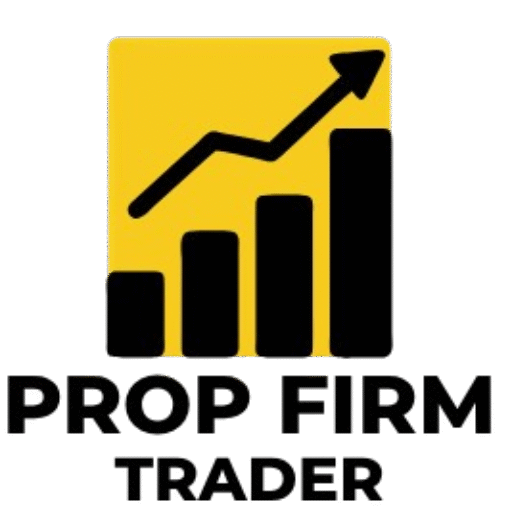📈 What Is a Prop Firm and How Does It Work? A Complete Guide for 2025

🧠 What Is Proprietary Trading?
Proprietary trading (or prop trading) involves a trader using a firm’s capital to trade financial instruments like stocks, options, forex, futures, and CFDs. Instead of trading their own money, traders manage the firm’s funds to generate profits, which are then split between the trader and the firm.
Prop trading is not limited to independent firms—it’s also practiced by:
Investment banks with dedicated prop trading desks (though heavily regulated post-2008)
Hedge funds, trading both proprietary and investor capital
High-Frequency Trading (HFT) firms, using algorithms to profit from micro-price changes
Commodity trading companies like Glencore and Vitol, trading both physical goods and financial contracts
🏢 What Is a Prop Firm?
A prop firm is a company that allows traders to trade using the firm’s capital. In exchange, traders receive a profit split, often between 70–90%, based on their performance.
Prop firms exist to find and back profitable traders—especially those who may lack sufficient personal funds, trading infrastructure, or mentorship.
These firms typically offer:
Access to trading capital
Technology and trading platforms
Risk management oversight
Training and community support
They may operate:
In-office (offering desks, mentorship, and direct supervision)
Remotely (allowing global access through online platforms)
⚙️ How Does Prop Trading Work?
Here’s how the typical process works:
Evaluation or Challenge Phase
Many remote prop firms require traders to pass a performance challenge. This tests your ability to hit a profit target while staying within a maximum drawdown limit—usually over 10–30 trading days.Funding Phase
Once you pass the challenge, the firm allocates you a real or simulated trading account (often between $10K to $200K+). You then trade under certain risk rules.Profit Splits and Withdrawals
Traders receive a percentage of the profits—often starting at 70–80%, increasing with consistent performance.Scaling Plans
Many firms offer capital scaling plans for consistent traders, potentially growing your trading capital into the millions.
💰 How Do Prop Firms Make Money?
Prop firms generate revenue primarily through two channels:
1. Profit Sharing
The core model is a win-win: the more successful the trader, the more both parties earn.
2. Evaluation Fees or Subscriptions
Some firms charge upfront fees for traders to take evaluations or join funding programs. These fees help offset the firm’s risk and operating costs. Many refund these fees once traders pass and start trading live capital.
⚠️ Note: Due to increasing scrutiny, fee-based models are evolving. Some prop firms now offer no-fee, live trading programs with stricter evaluation of performance and risk.
✅ Advantages of Using Prop Firms
Prop trading offers numerous benefits, especially for independent traders:
1. Access to Large Capital
Trading with $100,000+ in capital is far more scalable than risking $500 of your own savings.
2. Reduced Personal Risk
Since you’re not trading your own money, your downside risk is limited—though poor performance can result in losing your funded status.
3. Professional Tools and Platforms
Many prop firms provide high-end charting software, real-time news feeds, and other resources individual traders may not afford.
4. Accelerated Learning and Mentorship
Some firms (especially office-based ones) offer training, mentorship, or group collaboration.
5. Global Remote Access
You can join and trade from anywhere in the world with internet access.
❌ Disadvantages of Prop Trading Firms
Despite the perks, trading with a prop firm isn’t for everyone:
1. Performance Pressure
Most firms expect consistent results. If you don’t meet targets or break risk rules, you can lose funding.
2. Upfront Fees
Although refundable in some cases, evaluation fees can be a financial strain—especially if you fail and must reattempt.
3. Limited Security
These are often performance-based roles, not salaried jobs. There’s no guaranteed income or long-term stability.
4. Strict Rules
You must follow trading guidelines—such as minimum trading days, daily loss limits, and position size caps.
🚀 How to Get Started with Prop Trading
🔹 Choose a Type of Firm
In-office firms (e.g., SMB Capital, Jane Street) offer salaries, real trading floors, and mentorship—but are highly selective.
Remote firms (e.g., FTMO, MyFundedFX, FundedNext) are more accessible and popular among retail traders.
🔹 Pick a Challenge or Evaluation Model
Most remote prop firms offer a challenge requiring:
A profit target (e.g., 10%)
Max daily and total drawdown limits
Specific trading days (e.g., min. 5–10 days)
👉 Pass the challenge to receive a funded account.
🔹 Trade and Scale
Once funded, focus on:
Risk management
Consistent execution
Logging and reviewing your trades
Some firms offer scaling plans that increase your capital every few months if you perform well.
📉 Is the Fee-Based Prop Firm Model Dying?
Yes and no.
Due to regulatory concerns and changes from trading platform providers, many firms are phasing out upfront fee challenges or offering live accounts without fees.
Traders now have access to more transparent, performance-based programs where funding is earned through real results—without speculative “pay-to-play” models.
📝 Final Thoughts: Should You Join a Prop Firm?
If you’re a skilled trader looking to scale but lack capital, prop firms can be a powerful gateway to professional-level trading.
However, success requires:
Discipline
Patience
A solid strategy
Understanding the firm’s rules
💡 Pro tip: Always research reviews and payout histories before joining any prop firm.
